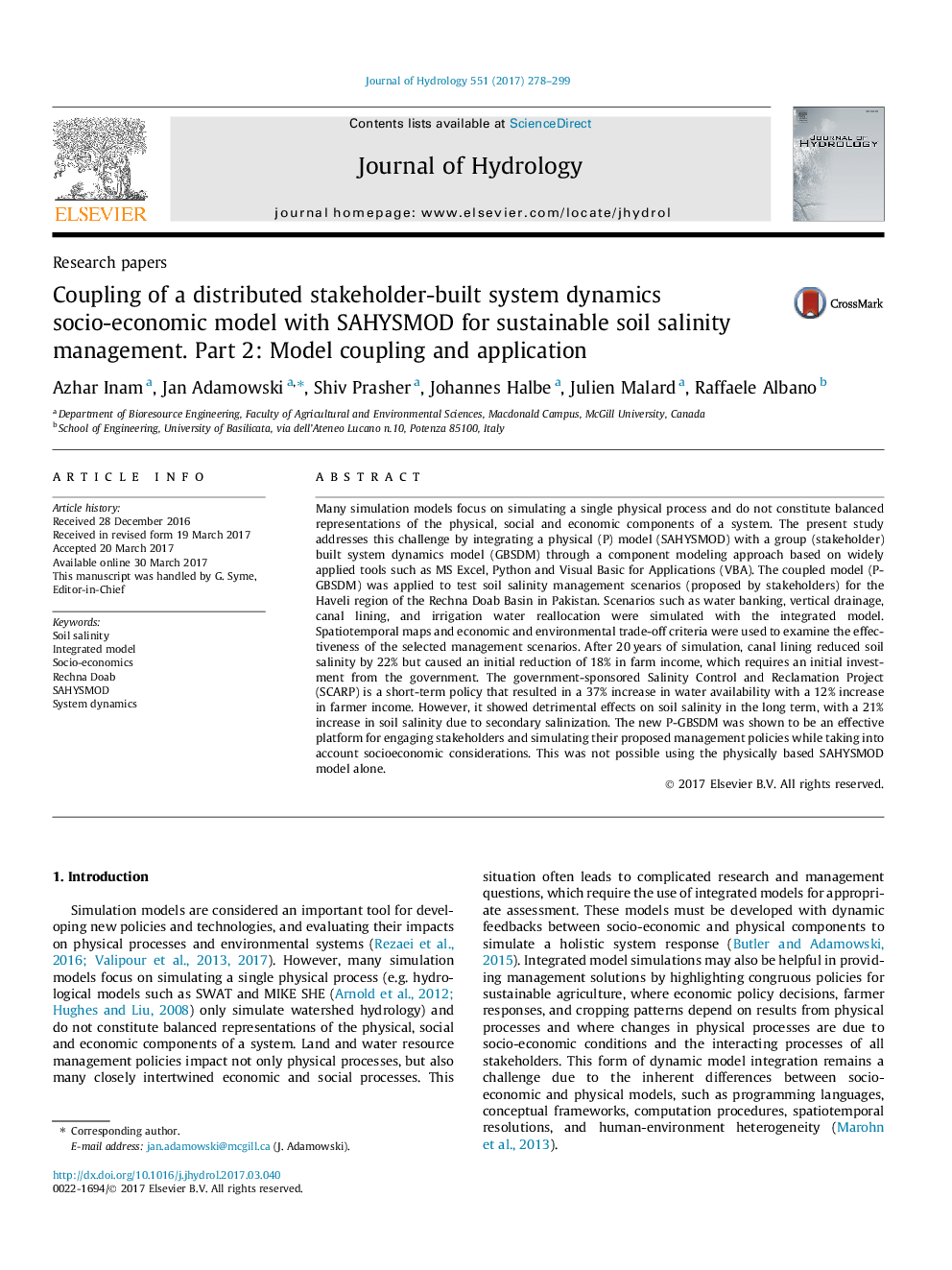| کد مقاله | کد نشریه | سال انتشار | مقاله انگلیسی | نسخه تمام متن |
|---|---|---|---|---|
| 5770925 | 1629903 | 2017 | 22 صفحه PDF | دانلود رایگان |

- A socio-hydrological model was developed by coupling GBSDM with SAHYSMOD.
- The model was useful in evaluating stakeholder-proposed scenarios of soil salinity.
- Economic and environmental trade-off criteria were used for scenario evaluation.
Many simulation models focus on simulating a single physical process and do not constitute balanced representations of the physical, social and economic components of a system. The present study addresses this challenge by integrating a physical (P) model (SAHYSMOD) with a group (stakeholder) built system dynamics model (GBSDM) through a component modeling approach based on widely applied tools such as MS Excel, Python and Visual Basic for Applications (VBA). The coupled model (P-GBSDM) was applied to test soil salinity management scenarios (proposed by stakeholders) for the Haveli region of the Rechna Doab Basin in Pakistan. Scenarios such as water banking, vertical drainage, canal lining, and irrigation water reallocation were simulated with the integrated model. Spatiotemporal maps and economic and environmental trade-off criteria were used to examine the effectiveness of the selected management scenarios. After 20Â years of simulation, canal lining reduced soil salinity by 22% but caused an initial reduction of 18% in farm income, which requires an initial investment from the government. The government-sponsored Salinity Control and Reclamation Project (SCARP) is a short-term policy that resulted in a 37% increase in water availability with a 12% increase in farmer income. However, it showed detrimental effects on soil salinity in the long term, with a 21% increase in soil salinity due to secondary salinization. The new P-GBSDM was shown to be an effective platform for engaging stakeholders and simulating their proposed management policies while taking into account socioeconomic considerations. This was not possible using the physically based SAHYSMOD model alone.
Journal: Journal of Hydrology - Volume 551, August 2017, Pages 278-299